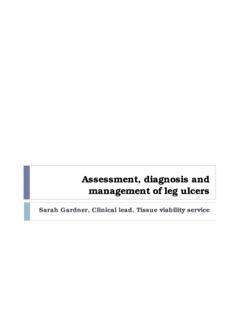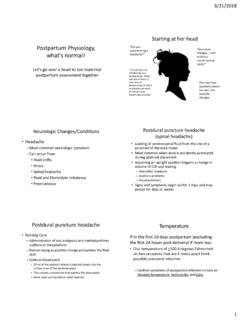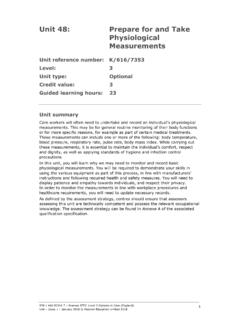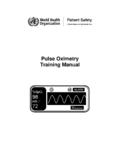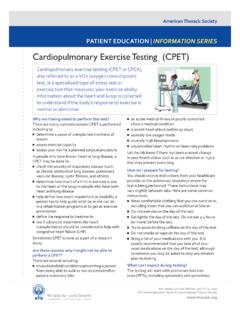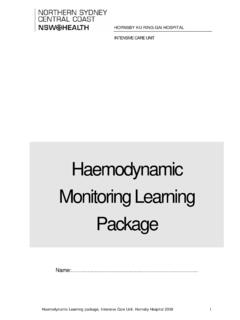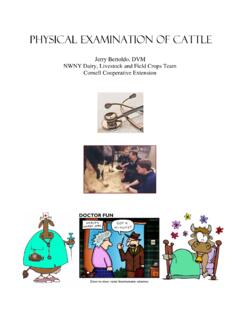Transcription of Guideline: Respiratory distress and CPAP
1 Maternity and NeonatalClinical GuidelineQueensland Health Clinical Excellence Queensland Respiratory distress and cpap Queensland Clinical Guideline: Respiratory distress and cpap Refer to online version, destroy printed copies after use Page 2 of 32 Document title: Respiratory distress and cpap Publication date: June 2020 Document number: Document supplement: The document supplement is integral to and should be read in conjunction with this guideline. Amendments: Full version history is supplied in the document supplement. Amendment date: October 2021 Replaces document: Author: Queensland Clinical guidelines Audience: Health professionals in Queensland public and private maternity and neonatal services. Review date: June 2025 Endorsed by: Queensland Clinical guidelines Steering Committee Statewide Maternity and Neonatal Clinical Network (Queensland) Contact: Email: URL: Disclaimer This guideline is intended as a guide and provided for information purposes only.
2 The information has been prepared using a multidisciplinary approach with reference to the best information and evidence available at the time of preparation. No assurance is given that the information is entirely complete, current, or accurate in every respect. The guideline is not a substitute for clinical judgement, knowledge and expertise, or medical advice. Variation from the guideline, taking into account individual circumstances, may be appropriate. This guideline does not address all elements of standard practice and accepts that individual clinicians are responsible for: Providing care within the context of locally available resources, expertise, and scope of practice Supporting consumer rights and informed decision making, including the right to decline intervention or ongoing management Advising consumers of their choices in an environment that is culturally appropriate and which enables comfortable and confidential discussion.
3 This includes the use of interpreter services where necessary Ensuring informed consent is obtained prior to delivering care Meeting all legislative requirements and professional standards Applying standard precautions, and additional precautions as necessary, when delivering care Documenting all care in accordance with mandatory and local requirements Queensland Health disclaims, to the maximum extent permitted by law, all responsibility and all liability (including without limitation, liability in negligence) for all expenses, losses, damages and costs incurred for any reason associated with the use of this guideline, including the materials within or referred to throughout this document being in any way inaccurate, out of context, incomplete or unavailable.
4 Recommended citation: Queensland Clinical guidelines . Respiratory distress and cpap Guideline No. Queensland Health. 2021. Available from: State of Queensland (Queensland Health) 2021 This work is licensed under a Creative Commons Attribution-NonCommercial-NoDerivatives International licence. In essence, you are free to copy and communicate the work in its current form for non-commercial purposes, as long as you attribute Queensland Clinical guidelines , Queensland Health and abide by the licence terms. You may not alter or adapt the work in any way. To view a copy of this licence, visit For further information, contact Queensland Clinical guidelines , RBWH Post Office, Herston Qld 4029, email For permissions beyond the scope of this licence, contact: Intellectual Property Officer, Queensland Health, GPO Box 48, Brisbane Qld 4001, email Cultural acknowledgement We acknowledge the Traditional Custodians of the land on which we work and pay our respect to the Aboriginal and Torres Strait Islander Elders past, present and emerging.
5 Queensland Clinical Guideline: Respiratory distress and cpap Refer to online version, destroy printed copies after use Page 3 of 32 Flow Chart: Neonatal Respiratory distress and cpap in babies 32 weeks gestation Flowchart: cpap indicated?YesNoNoYesYesNoOngoing care as indicated Clinical assessment Supportive care Consult with higher level service foradvice or to organise transfer/retrieval Transfer/retrievaloContact NeoRESQ or ANTS-NQ viaRSQ phone 1300 799 127 Intubation and mechanical ventilationSigns Tachypnoea > 60 breaths/minute Increased Respiratory effortoAudible expiratory gruntoRecession sternal, intercostal,subcostaloNasal flaring Cyanosis/oxygen needIndications for cpap Signs of Respiratory distress or Oxygen requirement 30% to maintainSpO2 within targetRespiratory distressOxygenation Maintain SpO2 within target rangeoTerm baby 92 98%oPreterm baby 90 95%Monitor and record Monitor continuously SpO2 (sensor onright hand)
6 , Respiratory rate, heart rate Observe for signs of increasingrespiratory distress /work of breathingBlood gas pCO2 may assist assessment (capillary)Fluids 10% glucose IV at 60 mL/kg/day Small gavage feeds if stableSepsis management Full blood count and blood cultures Antibiotics as per local protocol or Penicillin or Ampicillin and gentamicin Refer to QCG NeoMedQChest x-ray to identify: Respiratory disease Air leak ( pneumothorax) Congenital diaphragmatic hernia Chest masses Cardiomegaly Other anomaliesBlood glucose level Refer to QCG Hypoglycaemia-newbornSupportive care Family centred approach Observe baby unclothed in incubator Thermoneutral environment Position prone/quarter prone Development care minimal handling Skin-to-skin if stableConsult/Refer/Transfer as indicatedPrinciples of careSigns of improvement?
7 Wean/ceaseCPAPS igns of deterioration/ cpap failure?Assess & monitor clinical conditionCPAPC apability Level 4 neonatal service or above Appropriate equipment and humanresources availableCommence cpap at 7 8 cm H20; 6 8 L/minute O2 to maintain SpO2 within target OGT 6 8 FG on free drainageNeonatal care Monitor continuously:oSpO2 (sensor preferably right hand)oVital signs (heart rate, respiratoryrate, temperature, blood pressure )oFiO2 Record hourly:oVital signs, SpO2, work of breathing(sternal and intercostal recession,grunting, nasal flaring, tachypnoea)oCPAP pressure , flow, FiO2oHumidifier and circuit temperatureoWater level in humidifier Vigilant surveillance and record hourlyoCPAP interface positioned correctlyoSeptal columellar integrityoEyes are clearly visibleoSecuring devices not causingindentation, pitting or periorbitaloedemaSigns of deterioration/ cpap failure O2 > 40% to maintain SpO2 within target range A rapid rise in O2 requirement 10% over 2 hours ( an increasefrom 30% to 40%) Respiratory acidosis ( pH < normal base excess orPaCO2 > 60 mmHg)
8 Recurrent apnoea requiring stimulation Increased work of breathing Agitation that cannot be relieved referto QCG HIE guidelineSigns of improvement DecreasedoRespiratory rateoWork of breathingoO2 requirement ImprovedoBlood gasoChest x-rayoBaby comfortWeaning Commence when:oO2 < 25% and SpO2 within targetoRespiratory distress not presento 3 self-reverting apnoea,bradycardia, desaturation inprevious 6 hours WeanoO2 until 25% thenoPressure incrementally 1 cm astolerated until 5 cm H2 OCease if stable in 21% O2 and cpap 5 cm H2 OANTS-NQ: Advanced Neonatal Transport Service-North Queensland, cpap : continuous positive airway pressure , FG French gauge, FiO2: fractional inspired oxygen, HIE: Hypoxic-ischaemic encephalopathy, IV: intravenous, NeoRESQ Neonatal Retrieval Emergency Service Southern Queensland, p CO2: partial pressure of carbon dioxide, QCG: Queensland Clinical guidelines , RSQ: Retrieval Services Queensland, SpO2: peripheral capillary oxygen saturation, >: greater than, : greater than or equal to, <: less than; : less than or equal to Queensland Clinical Guideline: Respiratory distress and cpap Refer to online version, destroy printed copies after use Page 4 of 32 Table of Contents Abbreviations.
9 5 Definitions .. 5 1 Introduction .. 6 Lung development and Respiratory physiology .. 6 Clinical course of Respiratory distress .. 6 Clinical standards .. 7 2 Assessment .. 8 Signs .. 8 X-rays .. 9 3 Diagnosis ..10 Differential diagnosis ..10 Respiratory distress syndrome ..10 Transient tachypnoea of the newborn ..11 Pulmonary air leaks ..12 Congenital anomalies ..13 Other Respiratory distress ..14 Infection, aspiration and interstitial lung disease ..14 Persistent pulmonary hypertension of the newborn (PPHN) ..15 4 Management ..16 Supportive care ..16 5 Continuous positive airway pressure ..17 cpap physiology ..17 cpap use ..18 cpap administration ..19 cpap settings ..20 Care of baby ..21 General care.
10 21 Developmental care and positioning ..22 pressure area care ..23 Complications of cpap ..24 Clinical course ..25 Weaning cpap ..26 References ..27 Appendix A Comparison of Respiratory disease ..29 Appendix B Pulmonary air leaks ..31 Acknowledgements ..32 List of Tables Table 1. Respiratory disease clinical course .. 6 Table 2. Clinical standards .. 7 Table 3. Signs .. 8 Table 4. X-ray interpretation .. 9 Table 5. Differential diagnosis .. 10 Table 6. Respiratory distress syndrome .. 10 Table 7. Transient tachypnoea of the newborn .. 11 Table 8. Pulmonary air leaks .. 12 Table 9. Congenital 13 Table 10. Infection and aspiration .. 14 Table 11. PPHN .. 15 Table 12. Supportive care .. 16 Table 13. cpap physiology .. 17 Table 14. cpap use.











